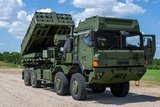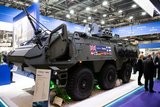ADF set to seek cutting-edge C-IED capabilities
The Australian government has committed funding to a programme to upgrade the counter-improvised explosive device (C-IED) capabilities of the Australian Defence Force (ADF), with First Pass approval of LAND 154 Phase 2 Joint C-IED announced on 22 September.
Capability development activities, trials, risk reduction activities and industry solicitation will now commence with $19.5 million in funding released for the programme.
Minister for Defence, Senator David Johnston, said: ‘IEDs have emerged as the weapon-of-choice against Australian forces deployed in both Iraq and Afghanistan, and the effectiveness of IEDs has more recently been demonstrated in Mali and Syria.
‘The use of IEDs continues to increase globally and they are being employed by an expanding range of groups, including insurgents, terrorists and by conventional and unconventional military forces.’
With IEDs remaining a primary threat that the ADF and other Australian personnel will likely encounter in future operations in the region, LAND 154 Phase 2 Joint C-IED will aim to equip the ADF with the ability to rapidly deploy appropriate C-IED systems without reliance on allied partners for support.
Defence will explore a number of capabilities prior to Second Pass approval, including a deployable intelligence facility will allow the ADF to rapidly respond to regional or local IED blast events and begin critical (and potentially life-saving) analysis of evidence; a rapid and protected vehicle mounted system with the ability to safely detect IED at relatively rapid speed; and new personal and vehicle mounted counter IED systems.
The total value of this project at Second pass is anticipated to be over $300 million; a decision will occur in 2016 or 2017 depending on the maturity of the capabilities.
More from Land Warfare
-
![Lithuanian 1st Division to achieve initial operating capability in 2026]()
Lithuanian 1st Division to achieve initial operating capability in 2026
Lithuania is one of the countries stepping up its defences in the face of the war in Ukraine with a particular focus on its neighbour and Russian ally Belarus, which has been making incursions into Lithuania’s airspace with balloons and drones.
-
![Beyond Survivability: How Active Protection Systems Are Empowering Commanders (Podcast)]()
Beyond Survivability: How Active Protection Systems Are Empowering Commanders (Podcast)
As threats diversify and intensify, APS are proving essential not just for vehicle protection but also for enhancing operational freedom, effectiveness and mission success in contested environments.
-
Medium knocked out of British Army LMP, with CAVS as heavyweight champion
As the British Army seeks to modernise and consolidate its diverse vehicle fleet, yet another change in direction is underway.






















